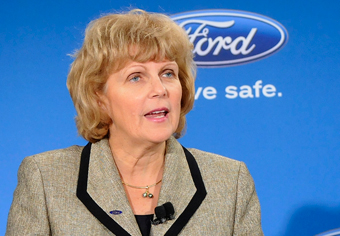
WASHINGTON – Ford Motor Co. will launch a fleet of prototype intelligent vehicles this spring to tour the country while testing wireless communications systems designed to reduce accidents and traffic congestion.
Doubling its investment this year, the auto maker will provide the U.S. Department of Transportation with additional prototypes to test in the agency's research and development clinics this summer.
Ford also is establishing a new 20-member task force of scientists and engineers to research a broad spectrum of intelligent-vehicle issues. Team members will include Ford planners, as well as safety, infotainment and eco-mobility experts.
Mike Shulman, a technical leader with Ford research and advanced engineering will chair the committee.
“Ford believes intelligent vehicles that talk to each other through advanced Wi-Fi are the next frontier of collision-avoidance innovations that could revolutionize the driving experience and hold the potential of helping reduce many crashes,” Sue Cischke, group vice president-sustainability, environment and safety engineering, says during the auto show here.
Production-model intelligent vehicles could be in dealer showrooms in the next five to 10 years, she predicts.
Intelligent vehicles have the potential to prevent 4,336,000 police-reported crashes annually, some 81% of all accidents involving unimpaired drivers, according to a study by the U.S. National Highway Traffic Safety Admin.

Cischke says Ford is doubling its funding of intelligent vehicle R&D this year. It is seeking to allow vehicles to communicate wirelessly on a Federal Communications Commission’s allocated secure channel.
Wi-Fi radio used in the intelligent vehicles will have a full 360-degree detection capability to avoid potential crashes.
For example, drivers could be warned if their vehicle is on a course to crash with another vehicle at an intersection, such as when the car in front suddenly stops or slows. The system also could warn drivers of potential collisions when changing lanes or approaching a stopped vehicle.




